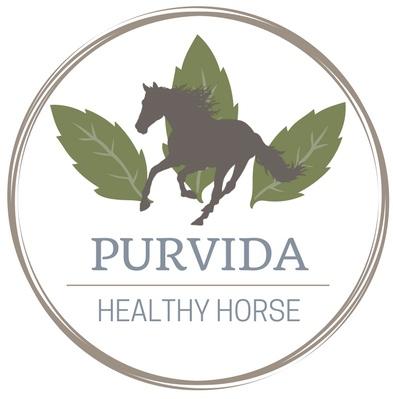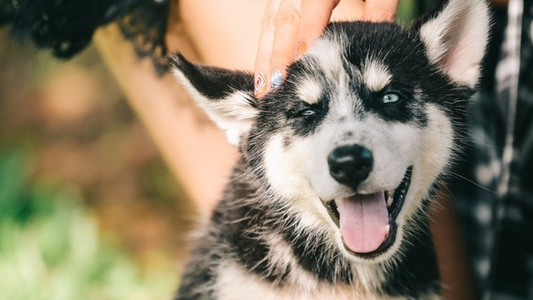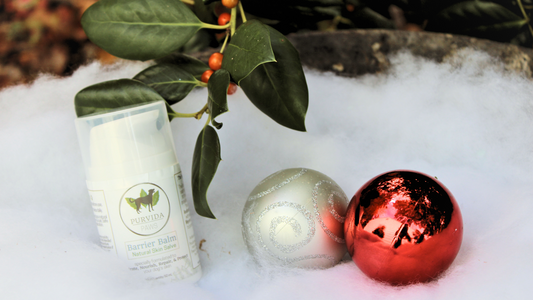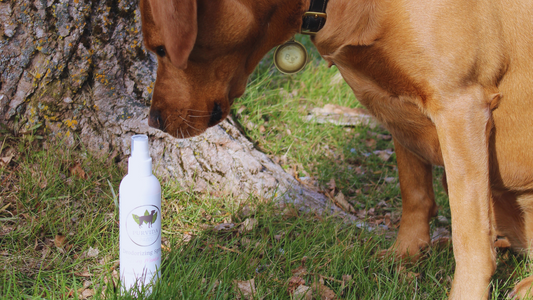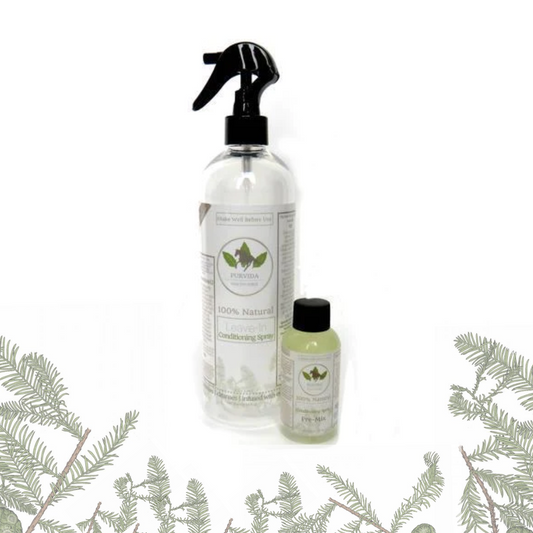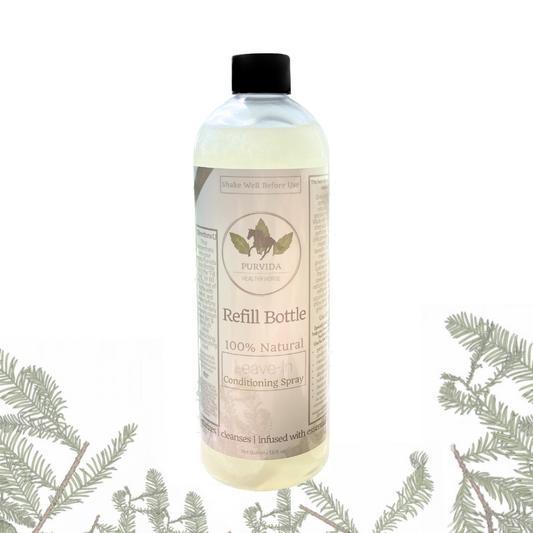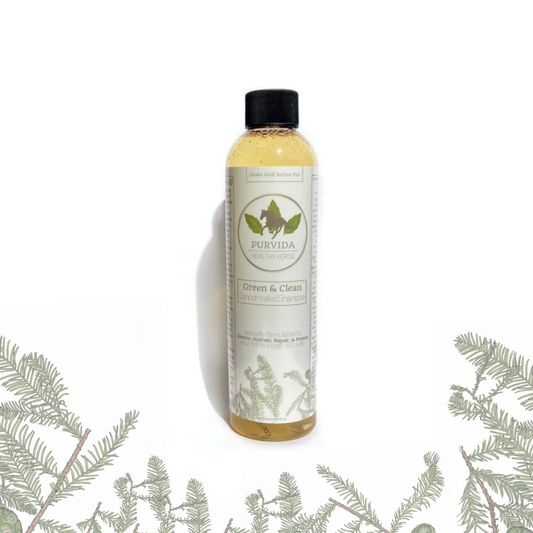As a pet parent, few things are more frustrating than watching your dog struggle with itchy, irritated skin. You’ve tried different shampoos, adjusted their diet, and yet the scratching continues. Those small flakes of dandruff dotting their fur are a constant reminder that something’s not quite right. The good news? The right natural solution could be the game-changer you’ve been searching for–that’s why we’re doing a deep dive on some of the root causes of your dog’s itchy skin, as well as seven natural remedies that often lead to long-term relief and healthier skin.
1. Seasonal Allergies
Just like humans, dogs can suffer from seasonal allergies. Pollen, mold, and dust mites are some common allergens that can cause itching, redness, and irritation. During the fall, ragweed and other plant pollens are particularly prevalent, triggering allergic reactions in sensitive dogs.
Natural Solution: To soothe allergy-induced itching, consider giving your dog regular baths with a gentle, pH-balanced shampoo containing ingredients like coconut oil, oatmeal, or aloe vera, like our Green N' Clean Shampoo. These ingredients can help calm irritated skin and remove allergens from the coat. Adding omega-3 fatty acids to your dog's diet can also help reduce inflammation and improve overall skin health.
2. Dry Air and Low Humidity
As temperatures drop, indoor heating systems can reduce humidity levels, leading to dry skin. This dry air strips moisture from your dog’s skin, making it flaky, itchy, and more prone to irritation.
Natural Solution: Use a humidifier in your home to maintain moisture in the air, which can help keep your dog's skin hydrated. Additionally, applying a natural moisturizing balm and conditioning spray, like Purvida Paws Barrier Balm and Deodorizing Spray, to help lock in hydration, kill bacteria, and help repel ticks.
3. Dietary Deficiencies
A lack of essential nutrients, particularly omega-3 and omega-6 fatty acids, can contribute to dry, itchy skin. These fatty acids play a crucial role in maintaining the health of your dog's skin and coat.
Natural Solution: Ensure your dog's diet includes sufficient omega-3 and omega-6 fatty acids, which can be found in fish oil, flaxseed oil, and chia seeds. You might also consider adding a high-quality, natural supplement to their diet to address any deficiencies and promote healthy skin from the inside out.
4. Contact Dermatitis
Contact dermatitis occurs when a dog’s skin comes into direct contact with an irritant or allergen, such as certain types of plants, chemicals, or even certain grooming products. This can cause redness, itching, and flakiness. Dogs with contact dermatitis might show signs of irritation on their paws, belly, or areas where they frequently make contact with surfaces like carpets or grass. The itching and scratching can lead to secondary issues, such as infections or exacerbation of the irritation.
Natural Solution: Identify and remove the irritant from your dog’s environment, use a gentle shampoo like Purvida Paws Green N' Clean Shampoo to reduce irritation, and apply a soothing topical like Purvida Paws Barrier Balm for immediate relief.
5. Fungal and Bacterial Infections
Yeast infections are a common cause of itchy skin in dogs, often affecting areas like the ears, paws, and skin folds. Yeast naturally lives on the skin, but when it overgrows due to factors like moisture, warmth, allergies, or a weakened immune system, it can lead to irritation, redness, a musty odor, and intense itching.
Moist, warm environments—such as floppy ears or deep skin folds—create ideal conditions for yeast to thrive. Allergies, whether food-related or environmental, can also disrupt the skin’s balance, making it more susceptible to yeast overgrowth. A diet high in carbohydrates, which can convert to sugars that yeast feeds on, or a weakened immune system can further contribute to the problem.
Natural Solution: Keeping your dog’s skin clean and dry is essential in preventing infections. Treating yeast infections typically involves a combination of topical and dietary approaches. Topical treatments, such as antifungal shampoos, antifungal balms like our Barrier Balm Natural Skin Salve, or natural solutions like diluted apple cider vinegar, can reduce yeast levels on the skin and provide relief. Additionally, dietary supplements like probiotics and omega fatty acids can help restore the balance of good bacteria and support overall skin health from within. Reducing carbohydrates in your dog’s diet can also help further manage yeast levels.
6. Poor Grooming Habits
Infrequent grooming can lead to the buildup of dead skin cells, dirt, and oils, causing dandruff and skin irritation. On the other hand, over-bathing can strip the skin of its natural oils, leading to dryness.
Natural Solution: Maintain a regular grooming routine tailored to your dog’s breed and coat type. Use a gentle, natural shampoo and avoid over-bathing. Regular brushing can help distribute natural oils and remove dead skin cells.
Bathing schedules can vary depending on your dog's coat type, lifestyle, and specific skin needs. Here are some recommendations for different coat types:
|
Coat Type |
Examples |
Bathing Frequency |
Notes |
|
Short-Coated Dogs |
Beagles, Boxers, Dalmatians |
Every 4-6 weeks |
Less frequent bathing. Regular brushing helps remove loose hair and dirt. |
|
Medium-Coated Dogs |
Cocker Spaniels, Bulldogs, Schnauzers |
Every 6-8 weeks |
Slightly more frequent baths needed. Regular brushing helps manage oils and dirt buildup. |
|
Long-Coated Dogs |
Golden Retrievers, Collies, Shih Tzus |
Every 4-6 weeks |
More frequent baths to manage thicker coats. Regular brushing prevents tangles and mats. |
|
Double-Coated Dogs |
Huskies, Australian Shepherds, Pomeranians |
Every 6-8 weeks |
Regular baths to manage dense undercoats. Frequent brushing is essential to remove loose undercoat. |
|
Curly or Wavy-Coated Dogs |
Poodles, Portuguese Water Dogs, Bichon Frises |
Every 4-6 weeks |
Regular baths and brushing to prevent tangles and maintain curls or waves. |
|
Sensitive or Allergic Dogs |
Dogs with allergies or skin conditions |
As needed, typically every 4-6 weeks |
Use gentle, specialized shampoos. Frequency may vary based on specific needs and vet recommendations. |
General Tips:
- Use a Mild, Natural Shampoo: Choose a shampoo that is appropriate for your dog’s skin type and coat. Hypoallergenic, pH balanced, and oatmeal-based shampoos are great for sensitive skin.
- Adjust Based on Activity: If your dog is particularly dirty or has been swimming, you may need to bathe them more frequently. Adjust the schedule as needed based on their activity level and environment.
- Consider Professional Grooming: For breeds with complex grooming needs or those prone to matting, professional grooming can help maintain their coat and skin health.
By tailoring the bathing schedule to your dog's specific coat type and needs, you can help keep their skin and fur healthy and comfortable. Feel free to adjust any specifics based on your dog's individual needs!
7. Food Allergies
In addition to seasonal allergies, food allergies can also cause itchy skin and dandruff. Common culprits include chicken, beef, dairy, and grains. Dogs with food allergies often experience chronic ear infections, gastrointestinal issues, and skin problems.
Natural Solution: If a food allergy is suspected, an elimination diet can help identify the allergen. Switch to a hypoallergenic diet with novel proteins like duck or venison and avoid common allergens. You might also consider a natural dog food formulated to support skin health.
Addressing skin issues such as dry, itchy skin, contact dermatitis, or yeast infections requires a combination of effective grooming practices and targeted treatments. For example, yeast infections often need both topical treatments and dietary supplements to restore balance to the skin. Contact dermatitis can be managed by identifying and eliminating the irritants causing the problem, while poor grooming habits can be corrected by establishing a regular brushing and bathing routine.
Tailoring your grooming approach to your dog's specific coat type and skin needs is crucial for keeping them healthy and comfortable. Proper grooming not only improves their appearance but also supports their overall well-being and happiness. Understanding the underlying causes of dry, itchy skin—whether they stem from allergies, infections, or grooming practices—allows you to take proactive steps to alleviate discomfort. By addressing these issues with the right care and attention, you can significantly enhance your dog’s skin health and provide them with lasting relief and comfort.
